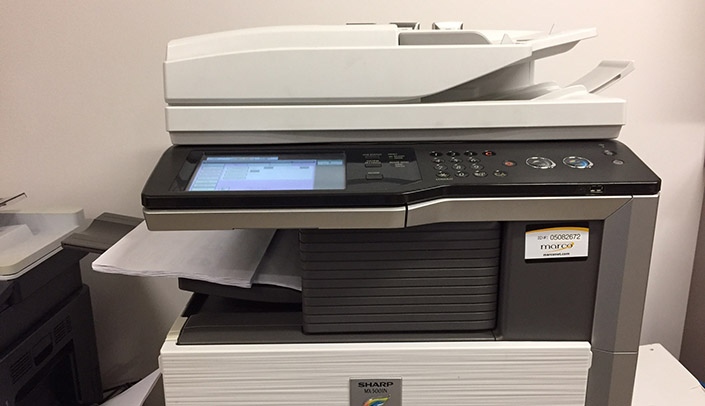Prior to the pandemic, how much did you print? Now, during the pandemic, how much do you print? With many people working from home, printing has been dramatically reduced. Without printers or a way to send physical documents, we had to find electronic ways to do our jobs.
Printing less didn’t start with the pandemic. It actually started years ago, when many “personal printers” were removed from med center offices in favor of the shared, all-in-one devices. This was largely a cost-saving measure — it’s more expensive to print on smaller devices.
But removing printers had a positive environmental impact too — less toner cartridges to deal with, less electricity being used and less printing. Not surprisingly, when people have to print to a shared device that’s not right next to them, they print less.
So just how much paper has been saved? In FY17, UNMC and Nebraska Medicine combined to use a whopping 92,040,000 sheets of paper. We had significant reductions in FY18 and FY19, and with numbers from FY20 just in, we are down to 48,950,000 sheets of paper. In the past three years we have saved a minimum of:
- 62,861,447 sheets of paper;
- $379,000 in purchased paper costs;
- Doesn’t count labor to deliver, stock, load, transport or shred, which would be additional savings
- 7,543 trees; and
- 362,083 pounds of CO2e (164 metric tons), which harms human health and is a major contributor to climate change.
Some of FY20’s savings can be attributed to COVID-19. With more people working from home, we printed less. We may not have had a choice, but as we started taking advantage of the different aspects of Office 365 (Teams, OneNote, etc.) and more patients used OneChart, we saw even further reductions.
Now, printing less has another benefit, by limiting exposure to highly touched, hard-to-clean items such as printers, mailing envelopes, filing folders and the paper itself.
Paper purchased (or not purchased) is factored into the med center’s Zero Waste goal. By printing less and reducing paper use, we’re able to advance even further toward our goal of 90% diversion by 2030.
Keep up the good work, and stick to those non-printing habits — don’t start printing if you come back to campus. Still learning? So are we. Here are some resources to help you reducing printing in your area.
